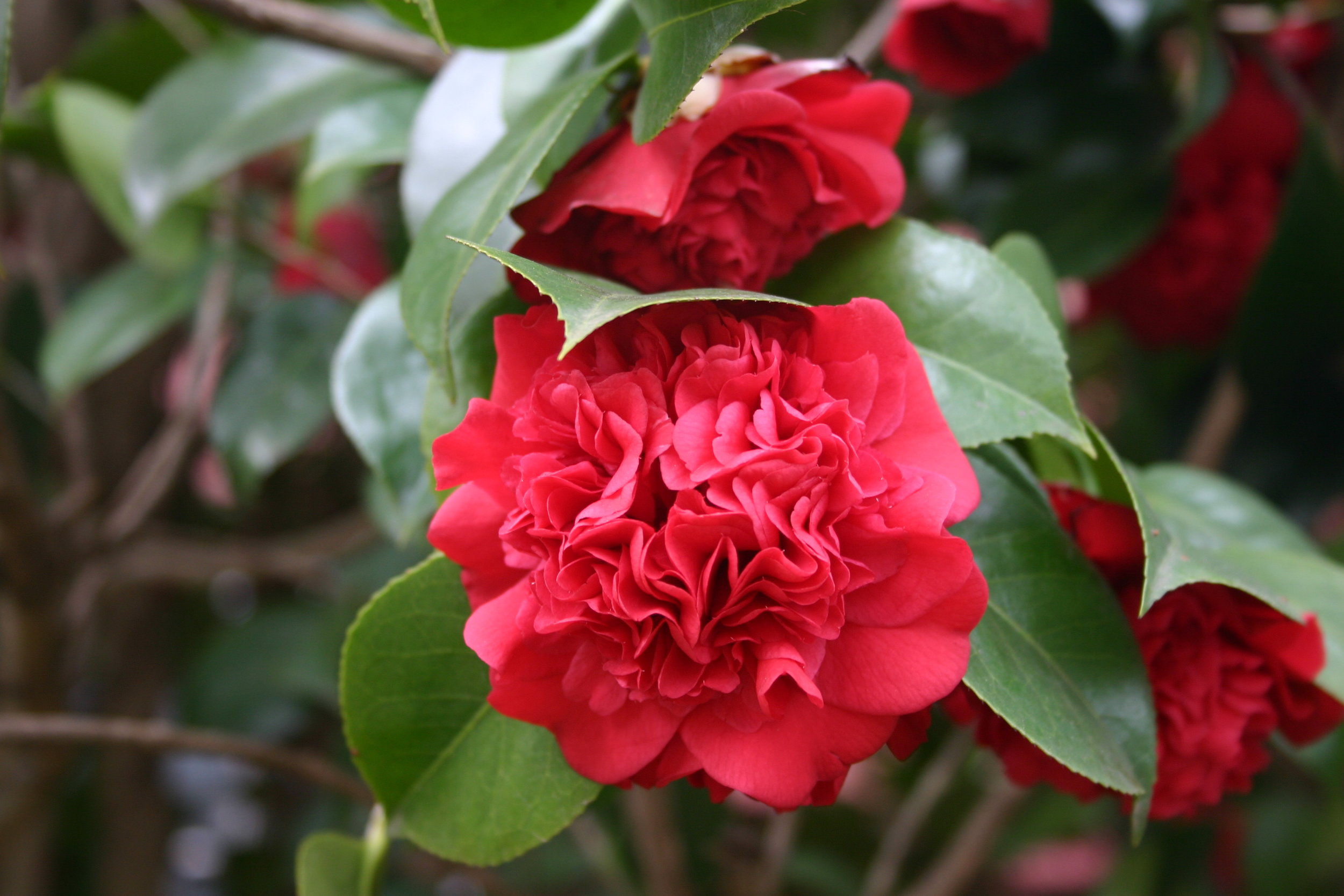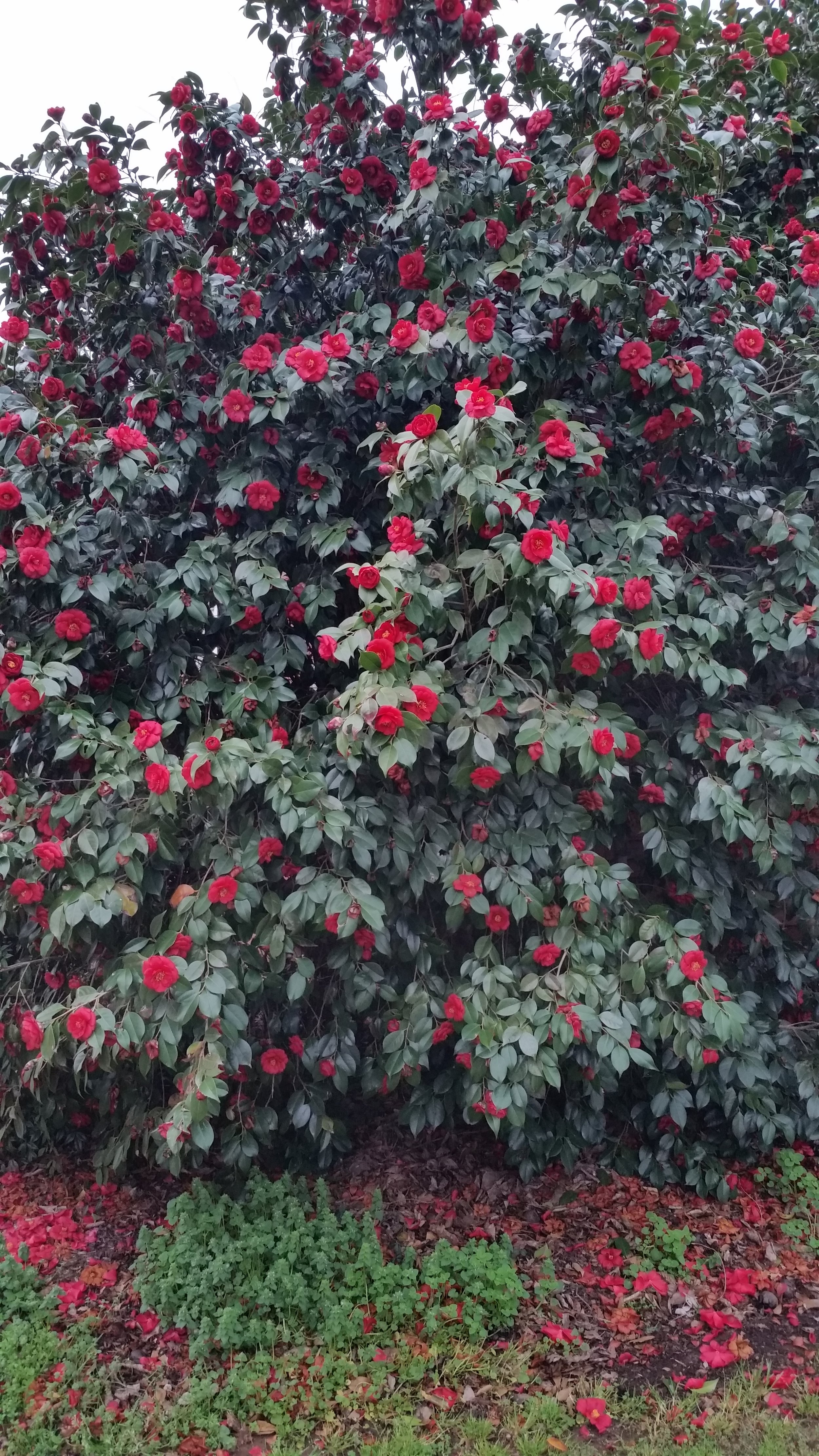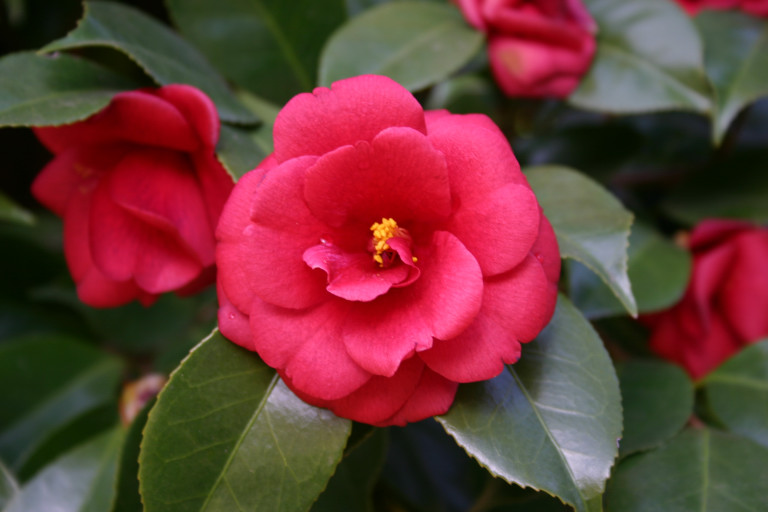Camellia shrubs are evergreen, long blooming, and love southern weather. Two types are available in most nurseries. Camellia sasanqua is a fall-bloomer that enjoys part-sun. Its leaves are a bit smaller than Camellia japonica, which blooms late winter, has larger leaves, and prefers a bit more shade. There are other species, crosses and hybrids.
With more than 3,000 named cultivars, gardeners can choose from variety of flower forms, ranging from those with prominent yellow stamens to those whose stamens are hidden by many petals (“formal double”). Flowers come in various shades of red, rose, pink and white. If you prefer a variegated bloom, and there are many available, be prepared to tolerate a little yellow spotting on the leaves as well. The variegation is a result of an introduced virus. It causes little to no damage to the plant, but variegated forms tend to be a bit shorter than their non-variegated peers. I like to buy my plants when they are in bloom, so I can see exactly what the flower looks like.
Camellias prefer to be planted in autumn, but can be installed almost any time of the year if the gardener is willing to water faithfully and install temporary shade material so that tender new leaves do not fry. Be careful to avoid planting them too deep.
Camellias will bloom best if given small amounts of fertilizer several times during the May to September period rather than a single heavy application. Over-fertilization leads to burned leaf edges and excessive bud drop. Some bud drop is normal. Plants tend to set more buds than they can open.
Camellias are slow growing which means pruning chores are limited. When necessary, pruning can be drastic. Severe pruning is almost always followed by a year of recovery, meaning no blooms. It is best to select a location where the plant can grow unchecked. In the Mary Snoddy garden, a pair of inherited Camellia japonica ‘Professor Sargent’ reach 25 feet in height. I have pruned them back twice in the past two decades to a height of about five feet. Both times they did not bloom the following season, but returned vigorously to their original height. Most cultivars will reach about 10 feet, with a spread of about 8 feet. Check the growers’ label before you buy. One cultivar, ‘Yuletide’ (red flowers and blooms around Christmas) is smaller and can be grown successfully in a container for years before it needs to be transplanted to open ground.
These beautiful shrubs are low maintenance, but can be bothered by several types of fungus, scale, aphids or spider mites. Scale is treated by an application of dormant oil. Site the plants out of harsh winds to avoid petal burn, but allow enough space between them for free air circulation. Rake up fallen blooms to avoid Camellia flower blight, which causes the entire bloom to brown and drop. If you spot anything unusual (galls, distorted or discolored leaves), try to identify and correct the problem before it becomes widespread. Keep plants healthy by providing a well-drained acidic soil and avoid injuring the bark. For all species, proactive maintenance (regular water and fertilizer) is preferable to reactive care.



